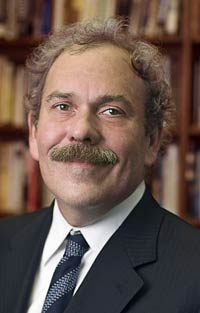City has to pay the way to excellence in staff
Think back to your years in school. If you were fortunate, there was a teacher who made you excited about what you were learning, who gave you the sense - perhaps for the first time - that you could do more than you thought, who may even have inspired you to choose a particular calling.
Far too many schoolchildren in New York City have never been exposed to such a teacher. That is why the report issued last week by the Commission on CFE [Campaign for Fiscal Equity] Implementation - an independent body created by the City Council to recommend how to spend billions of additional dollars in court-ordered school funding - is animated by one central idea: School reform in the city cannot succeed until each and every child has an excellent teacher. Not a competent or even a very good teacher, but an excellent teacher.
Ambitious? Certainly. But we are convinced this is not simply the best, but the only way to proceed.
The commission believes all teachers should be awarded salary incentives of 3 percent (added to any negotiated increases) to align local salaries with the regional labor market. To increase the number of qualified teachers in low-performing, high-need schools, teachers in targeted schools would receive an additional 7 percent - or 23 percent if they teach in target schools that adopt an 11-month calendar. Those whose skills qualified them as a "master teacher" - the highest rung on a new career ladder proposed by the commission - would receive an additional 10 percent increase.
Make no mistake: This is not a giveaway to teachers. Teacher skills would have to be demonstrated according to a rigorous set of criteria. The net effect of these changes would be to elevate the most highly skilled teachers who choose to work in target schools to the ranks of the most highly paid teachers in the state.
But even excellent teachers can't succeed without the right working conditions. Systemwide, the commission is calling for class sizes in grades K-3 to be capped at 18 students; class sizes in grades 4 and 5 to be reduced to 25; and in grades 6-8, to 28. Class sizes would be smaller in low-performing schools.
The corollary to these recommendations is that we must concentrate first on putting excellent teachers where they are most scarce, and where the need is greatest: in the city's lowest-performing schools. We all know where these schools are: in Harlem, in the South Bronx, in Bedford-Stuyvesant, and other poor, chiefly non-white areas. Sixty percent of the city's low-performing students are concentrated in just one-third of its schools, nearly all of them in these high-poverty areas. Too often, the sense of failure in these schools is so pervasive that even the most dedicated teacher seizes the first opportunity to flee to a "better" district.
The commission is calling for a two-tiered approach to reform that would identify all such schools and make their improvement a barometer of system-wide reform. The creation of an Independent Office for Research and Accountability would help identify target schools for augmented support and determine whether the commission's intensified strategies are producing desired results.
Indeed, we believe reform must be driven by facts - solid evidence about what works and what doesn't - rather than by political considerations or newspaper headlines. The sad history of school reform in New York City is that there has never been a comprehensive, ongoing tracking of reform initiatives, nor any sustained effort to discover what works and why. Every chancellor, every reform advocate, has come in with a new agenda. But without a sense of what has been tried and what has been proven to work, the system has been unable to develop the knowledge base needed for cumulative improvement.
Genuine transparency is particularly important now that the system is to get more funding. The proposed Independent Office would provide the public, the Department of Education, the schools, the mayor, the state and the court with evaluations of reform initiatives, student performance, parent/student teacher satisfaction and a tracking of the dollars spent from the judicial award. This independent body would conduct the educational research and assessment needed to report on the reforms, provide data to the public and - in part through checks and balances of its multiple reporting relationships - instill public confidence.
The challenges of school reform are great - but so is the promise. New York City has, as never before, the opportunity and the resources to get the job done. If we are serious about providing a sound, basic education through our schools, we will be driven by the goal of putting high-quality teachers in every classroom and keeping them there. What is at stake is nothing less than the future of our children.
The Op-Ed, entitled "City has to pay the way to excellence in staff," appeared in the April 19 edition of Newsday.
David Jones is CEO and president of the Community Service Society of New York. Arthur Levine is president of Teachers College at
Published Wednesday, Apr. 20, 2005
